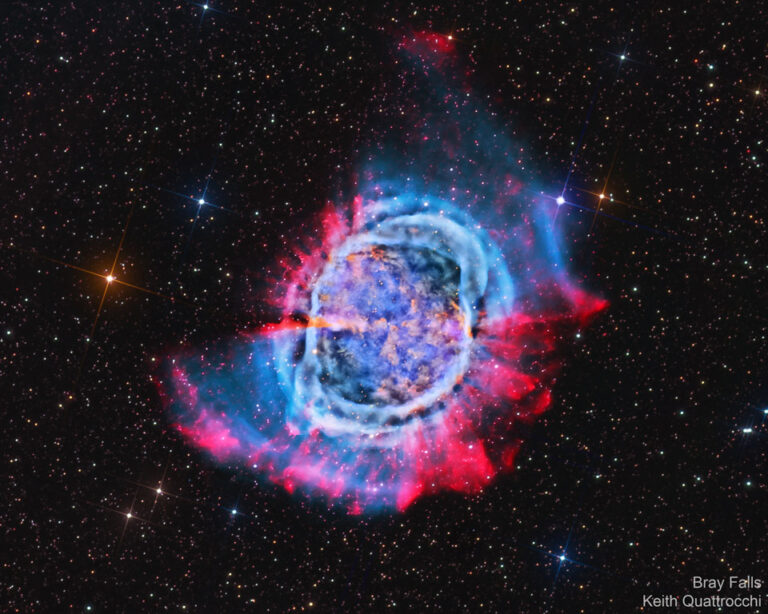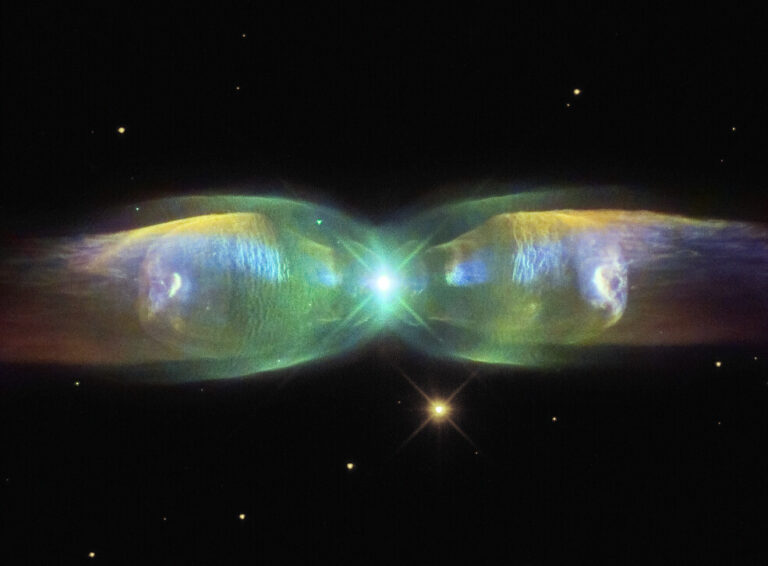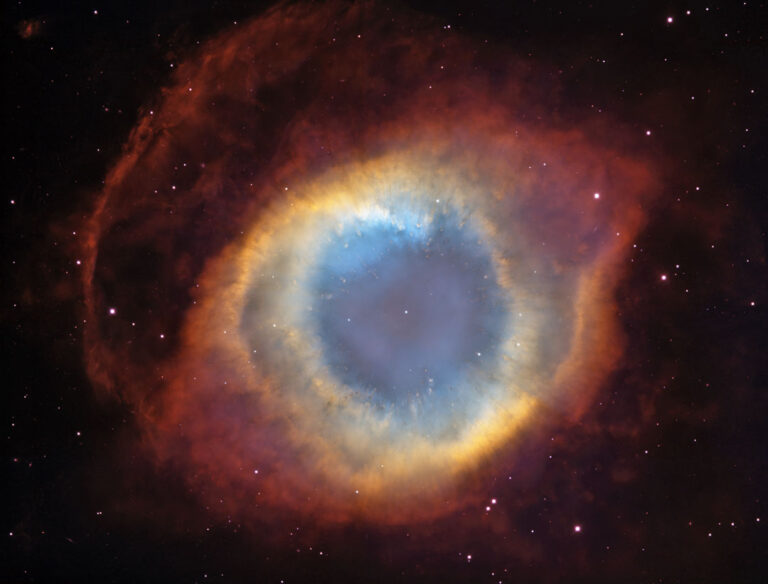M27:哑铃星云
2021年7月12日 M27: The Dumbbell Nebula Image Credit & Copyright: Bray Falls & Keith Quattrocchi Explanation: What will become of our Sun? The first hint of our Sun’s future was discovered inadvertently in 1764. At that time, Charles Messier was compiling a list of diffuse objects not to be confused with comets. The 27th object on Messier’s list, now known as M27 or the Dumbbell Nebula, is a planetary nebula, one of the brightest planetary nebulae on the sky — and visible toward the constellation of the Fox (Vulpecula) with binoculars. It takes light about 1000 years to reach us from M27, featured here in colors emitted by hydrogen and oxygen. We now know that in about 6 billion years, our Sun will shed its outer…










